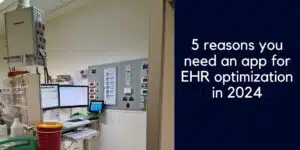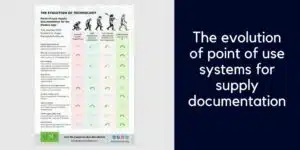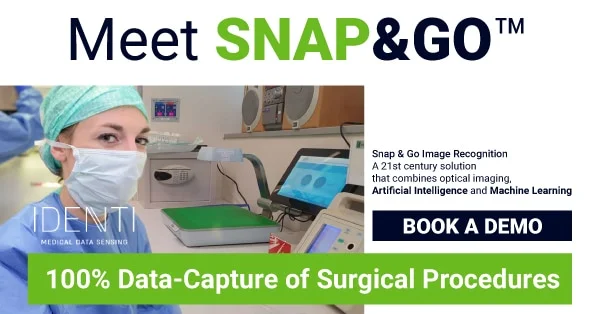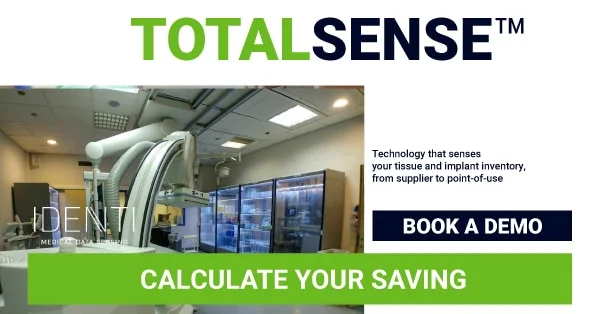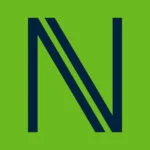What’s inside:
Achieving charge capture accuracy is paramount for hospitals and healthcare providers. In our latest blog, we delve into the critical indicators of common charge capture challenges that impact revenue generation for hosptials and healthcare facilities.
We explore key areas such as data integrity, post-surgery documentation, and proactive management strategies.
Learn how identifying and rectifying charge capture challenges can optimize revenue generation and enhance operational efficiency in your healthcare organization.
Main areas of content:
- Understanding charge capture issues
- Indicators of charge capture challenges
- Strategies for proactive management
- Impact of accurate charge capture on revenue generation
There’s a clear give-away, as clear as a red flag, that an organization is struggling with surgical supply charge capture.
But before we go there, let’s first consider how your OR supply documentation process performs. Is your charge capture water-tight?
If your point-of-use perioperative documentation technology fails to record the correct charge of every consumed, billable item, then your process and technology need urgent review.
Before revealing the red flag that signals your organization has OR data collection issues, let’s first review the basics.
The cost of poor charge capture at the point of care
When it comes down to the basics, healthcare organizations are businesses that need to be well managed in order to perform well in a challenging and competitive sector.
Charge capture, the process of accurately documenting and billing for patient care, is the financial lifeblood of healthcare institutions. However, despite its significance, many healthcare providers grapple with data collection challenges, particularly within operating rooms and procedural areas.
Poor surgical supply documentation costs US hospitals $7.7 billion annually.
It’s a really common issue that many are now focusing on in a bid to improve their margins.
Yet, amidst these challenges lies a significant opportunity for improvement. Customer feedback suggests that addressing charge capture inefficiencies can yield a substantial increase in reimbursement, with potential gains ranging from 10% to 30%. This represents a substantial boost to the financial health of healthcare organizations, making it a priority area for those seeking to enhance their margins and boost their competitive edge.
Inefficient charge capture is a prevalent issue in the sector and healthcare stakeholders are increasingly looking to improve process and leverage technology in to bolster charge capture efficiency.
Healthcare organizations are now taking proactive steps to tackle this common pain point so that they can enhance operational efficiency and financial performance.
Charge capture in a nutshell
Let’s review a few basics about surgical charge capture. Why does it matter? What are the challenges? And what is the role of data-collection technology?
▶ Why Charge Capture Matters:
With healthcare finance, every detail counts, especially when it comes to medical implants. These vital items represent a significant investment for hospitals and ambulatory surgery centers so ensuring full oversight in the accurate documentation of these implants can have significant financial impact. When high-value items are missed off medical billing or the provider undercharges for them, this has a direct implication on the bottom line. Achieving charge capture integrity in surgery is therefore vital for optimized medical billing and case revenue.
Ensuring charge capture integrity in surgical procedures is paramount for optimizing medical billing and maximizing case revenue. By meticulously recording every billable item used during surgery, healthcare providers can avoid revenue leakage and discrepancies in billing. Additionally, accurate charge capture enhances transparency in financial transactions, fosters trust among stakeholders, and upholds compliance with regulatory requirements.
But the financial implications extend beyond individual procedures. In a landscape where healthcare reimbursement models are increasingly tied to outcomes and value-based care, precise charge capture becomes even more critical. Proper documentation of medical implants not only safeguards revenue streams but also contributes to demonstrating the true cost-effectiveness and quality of care provided by healthcare institutions.
Overall, charge capture integrity serves as the cornerstone of financial health and operational efficiency so creating robust charge capture processes will improve healthcare performance.
▶ The Challenge:
It’s not easy. Precise supply documentation in surgeries is no small feat. Missed items, incorrect entries, and incomplete EHR records are a common outcome of inadequate systems that fail to achieve the task they were designed to tackle.
Achieving precise supply documentation within surgical settings presents a challenge. The high-pressure environment of operating rooms demands that the circulating nurse, who is responsible for documenting charge capture, prioritizes the tasks of supporting the patient and the clinical team. The complex job of meticulously and accurately entering product details into the system can be hard to achieve amid the flurry of patient-centered activity.
Unfortunately, inadequate point-of-use systems often exacerbate this challenge, leading to even further complications, such as missed items, incorrect entries, and incomplete records. Despite the best intentions, these shortcomings hinder healthcare providers’ ability to effectively capture and document every aspect of surgical supply utilization.
So, the sheer effort involved in correctly capturing product information and charges at the point of care is actually compounded by the very systems designed to streamline operations and enhance efficiency. When technology falls short healthcare teams then have to deal with the repercussions of inaccurate supply utilization documentation, which often involves resorting to inefficient and manual workflows.
▶ Data Capture Tech:
Inefficient data collection tools for perioperative documentation not only elongate workflows but also divert valuable attention away from patient care, leading to heightened levels of frustration among healthcare professionals and can adversely affect nurse job satisfaction, patient outcomes and organizational performance.
Perioperative documentation aims to achieving full charting and charge capture, yet despite concerted efforts, operating rooms from coast to coast continue to grapple with the challenge of maintaining data integrity throughout the surgical supply documentation process.
The limitations of traditional data capture technologies have become increasingly apparent in this context. Outdated systems often lack the agility and adaptability required to keep pace with the demands of modern healthcare delivery. Cumbersome interfaces, ineffective scanners, manual data entry requirements, and compatibility issues further exacerbate the challenges, impeding the seamless flow of information and hindering clinicians’ ability to provide timely and correct surgical records.
Full charting and charge capture are the goals of peri-op documentation in OR, traditional tech has failed.
🚩 And now on to the red flag that signals an organization has charge capture issues…
I see many hospitals caught up in a whirlwind of frantic, post-surgery activities, from documentation and record reviews to EHR reconciliation. It’s a total give-away that they don’t have faith in their OR data and suspect data discrepancies, errors and omissions.
Many providers have had to set up a painstaking post-surgery process designed to compensate for poor point of use technology, with the aim of filling in data gaps and making corrections to surgical supply records.
It can involve significant time and effort from senior, operational and nursing staff to get the OR records right, and also diverts attention away from other tasks, causing frustration.
But reactive management is resource-heavy and exhausting.
Why are hospitals having to take steps to mitigate the shortcomings of inadequate OR data capture tools?
Surely, it’s time for more proactive management strategies to achieve better data integrity at the point of care, resulting in a patient file that reflects supply consumption by the end of surgery, without the need for any additional data-entry, scanning, reviewing, or reconciling.
By adopting proactive measures such as implementing advanced point-of-use technology, hospitals can empower their staff to deliver optimal patient care while ensuring the integrity and accuracy of OR records from the outset.
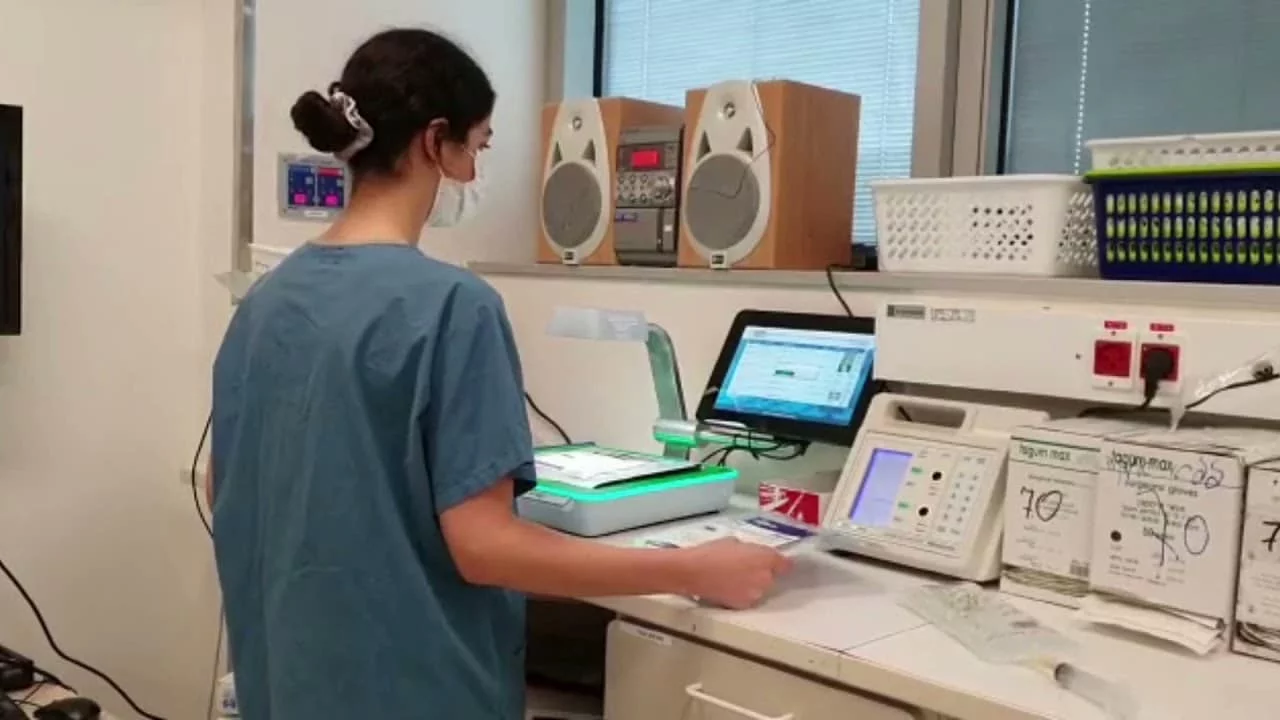
With the failure of current systems, healthcare providers are increasingly turning to innovative data capture technologies to upgrade their perioperative documentation capabilities.
There is now an understanding that evolving technology may be the key to bridging the gap between clinical care and administrative processes.
Next-generation data capture technologies can finally transform OR supply documentation into a quick and efficient task.
So, let’s look at the leading solution on the market.
Charge capture solution for point of use supply documentation
Snap&Go is a next-gen utilization and charge capture tool that achieves full data collection during surgery – including traditionally “tricky” items such as off-contract products, bill-only implants, surgery kits, and small consumables.
What does that look like?
▶ 100% reporting
▶ 100% charge capture
▶ For EVERY reportable and billable item
In short, Snap&Go delivers instant, accurate supply utilization records during surgery, without the need for any additional activity.
Image recognition, machine learning and AI technology allows clinicians to capture and document the usage of all reportable, billable medical supplies and implants in surgery by simply taking a photo of the item’s packaging or label.
Once the nurse has taken a ‘snap’ of the product, that’s the end of their supply documentation activity. The system automatically:
▶ Identifies the product
▶ Undertakes any necessary data-fixing
▶ Verifies the item to support patient safety
▶ Documents the item straight into the EHR
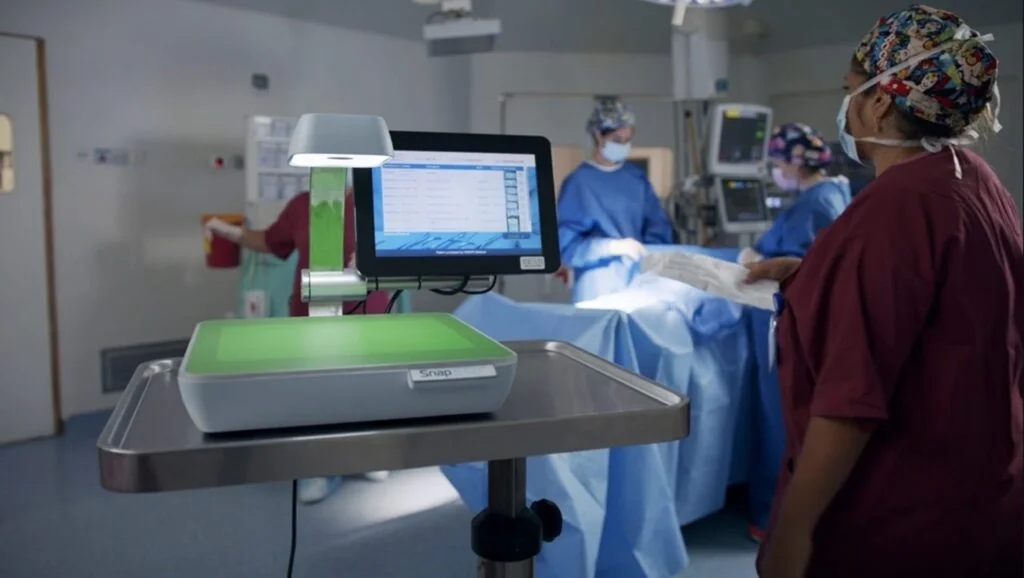
The starting point of fixing a broken surgical supply documentation system is to ensure that OR data capture tools are effective. This is the crucial raw data that you need to get right for the remainder of the process to be effective.
Data collection using computer vision and digital imaging technology offers several benefits for charge capture and documentation in the OR:
▶ Efficiency: By eliminating the need for manual data entry, image recognition technology streamlines the charge capture process, saving clinicians time and reducing the risk of errors.
▶ Accuracy: The advanced algorithms used in image recognition technology ensure accurate capture and documentation of medical supply usage, minimizing discrepancies and improving billing accuracy.
▶ Convenience: Clinicians can easily capture images of supplies using the Snap&Go computer sensor, allowing for seamless integration into existing workflow processes without disrupting surgical procedures.
▶ Real-time Updates: Image recognition technology provides real-time updates to the EHR, allowing healthcare facilities to achieve accurate supply usage records on-the-spot, without the need for any exhausting post-surgery chasing around.
▶ Reimbursement: When supply utilization and charge capture are optimized, case revenue is maximized.
Snap&Go tackles OR data-capture issues head on by enhancing charge capture and supply utilization documentation in the OR, enabling healthcare organizations to optimize OR revenue, improve operational efficiency, and enhance patient care quality.
Leveraging new technology can finally achieve precision charting and charge capture, without all that running around.
It’s time to join the image-to-data revolution.
If your organization is struggling with charge capture in operating rooms and procedural areas, then contact us to discuss the solution.
FAQ on charge capture in operating rooms
What are the charge capture issues in operating rooms, and why are they important in healthcare finance?
Charge capture issues in the operating room refer to inaccuracies or inefficiencies in documenting and billing for surgical care provided to patients, which is a significant element of case revenue generation for healthcare organizations.
The frantic nature of the operating room, combined with a wide range of inventory used, including bill-only items, makes surgical supply charge capture a complex task.
Charge capture issues encompass a spectrum of challenges that hinder the accurate documentation and billing for patients care within healthcare facilities. These issues can manifest as missed charges, incorrect entries, incomplete records, or delays in documentation, all of which have profound implications for the financial health of healthcare organizations.
What are some common indicators of charge capture challenges in healthcare facilities?
Common indicators of charge capture problems in healthcare organizations include difficulty documenting every utilized implant at the point of care, followed by frantic post-surgery documentation and the need for extensive OR record reconciliation activities to address discrepancies in surgical records.
Providers that need to compensate for inefficient point of use systems clearly lack confidence in the accuracy of OR data. Post-surgery documentation reviews and audits are an obvious indicator that the charge capture system is broken, and they need an urgent upgrade.
How does poor charge capture affect hospital revenue?
Poor charge capture can result in OR revenue leakage due to missed charges or billing error and poses a significant threat to hospital revenue streams and impacting the financial health of providers.
At its core, poor charge capture manifests as missed charges or billing errors, which collectively contribute to revenue leakage. When the supplies utilized in surgery are not accurately documented and billed for, healthcare facilities forfeit potential sources of revenue. These missed OR case charges represent lost opportunities to capture rightful reimbursement for the surgical supplies utilized in patient care delivery.
Additionally, billing errors stemming from inaccurate charge capture can lead to underbilling or overbilling scenarios, both of which can have adverse consequences for hospital finances. Underbilling results in revenue shortfall, while overbilling may trigger reimbursement denials, penalties, or audits, further exacerbating financial strain.
The repercussions of poor charge capture reverberate throughout the financial ecosystem of healthcare organizations, compromising their ability to meet operational expenses, hospital performance targets, and long-term growth.
Poor charge capture impedes organizational progress.
Therefore, addressing charge capture deficiencies is paramount for hospitals seeking to safeguard their revenue streams, enhance financial viability, and fulfill their mission of providing high-quality patient care.
What are some key strategies for improving financial performance in the operating room?
OR revenue is usually the largest element of hospital billing and a vital contributor to hospital performance.
Key strategies to optimize the financial performance of operating rooms include:
- Implementing inventory control systems
- Negotiating favorable vendor contracts to reduce inventory expenses
- Standardizing inventory, for example, tackling physician preferred item (PPI) variance
- Leveraging inventory data analytics to identify cost-saving opportunities.
Charge capture is part of a bigger opportunity for providers to improve OR efficiency and revenue.
Although there are many issues to address, the core issue is the same – OR supply data is the driver for all of these strategies, so getting OR data into core hospital systems can have a significant impact on various areas of clinical, operational and financial performance.
How do charge capture difficulties impact perioperative nurses in their role as circulating nurse?
The problem in many healthcare facilities is that charge capture is not simple.
The toxic combination of the following issues create a perfect storm for OR revenue loss:
- A complex range of medical inventory including tagged items, non-tagged items, kits, consignment and non-contract items make documentation difficult.
- A frantic operating room environment that requires nurses’ attention to be on the patient and clinical team as opposed to perioperative documentation.
- Inadequate point of use systems and hospital catalogs that struggle to keep up with item coding changes both conspire against seamless supply documentation.
Because of these problems the task of recording utilization in surgery is longwinded, frustrating and often reverts to manual workarounds. This has an impact on morale and affects nurse job satisfaction.
Nurses are screaming out for streamlined workflows, reduced administrative burdens, and an end to the reliance on post-surgery documentation after initial efforts fail. Managers are looking to improve perioperative nurse capacity and can see that inefficient perioperative documentation tools are a drain on nurse time and energy.
Healthcare providers can mitigate the risk of burnout and frustration by investing in proactive charge capture solutions that reduce administrative burdens, streamline workflows, and empower staff to deliver optimal patient care.
What steps can healthcare organizations take to implement a culture of continuous improvement in charge capture processes?
Healthcare organizations can implement a culture of continuous improvement and quality assurance by leveraging new healthcare technology that streamlines processes, automates workflows and achieves full charge capture.
It’s clear that data collection at the point of care is a vital task that contributes to OR revenue.
Many healthcare providers ultimately rely on manual data-entry when automated systems fail, and this risks data errors and omissions. Achieving a fully automated process that delivers accurate EHR records is the path to success.
Are there specific technologies available to improve charge capture processes in operating rooms?
Yes, the leading technology on the market that provides the quickest and simplest method of collecting correct and complete charge capture at the point of care, plus ensuring optimized revenue cycle management (RCM) and optimized billing, is Snap&Go.
This unique new technology uses image recognition technology to collect product data and capture charges, transforming surgical supply data collection into a 3 second task, per item.
See a video of Snap&Go in action:
With seamless integration with hospital electronic health records (EHR) systems, such as Cerner and EPIC, all data collected is shared with core hospital systems, including the ERP and MMIS/ORIS.
Tbe right point of use documentation technology has the power to streamline charge capture processes and improve revenue capture in the OR.
If your organization is struggling with charge capture challenges, it’s time to get in touch for a chat.



